Which Lentils Are Good For Kidney Disease
Lentils and other legumes are often warned against by those who are following a kidney disease diet. This is because they can be high in potassium and even phosphorus.
For the majority of people looking for healthy options in their diets, lentils are a superhero because of their excellent source of high quality protein, high fiber, many beneficial nutrients, and their association with lowering cholesterol and risk of heart disease.
Lentils are small but mighty when it comes to potential health benefits. They contain high amounts of protein and fiber, two essential components of any balanced diet.
Additionally, they boast several important vitamins and minerals including iron, zinc, folate, magnesium and potassium - all key nutrients for maintaining healthy body function.
So which type of lentil is most beneficial for those suffering from chronic kidney disease? Red split or petite red lentils are thought to be some of the best options due to their low phosphorus content compared to other varieties such as green or brown lentils.
This makes them easier on the kidneys while still supplying necessary nutrients like fiber, protein and micronutrients (vitamins & minerals). With careful meal planning and guidance from a registered dietitian or physician, adding red split or petite red lentils into meals can provide great nutritional value without overburdening the kidneys!
Helping individuals with Chronic Kidney Disease (CKD) make informed dietary choices has been my focus for over 25 years as a Registered Dietitian. I stay up to date with the latest renal nutrition research to ensure my recommendations, including managing potassium intake from foods like lentils, are both accurate and practical. By providing evidence-based guidance, I have supported thousands of CKD patients in making kidney-friendly food choices to help maintain their health.
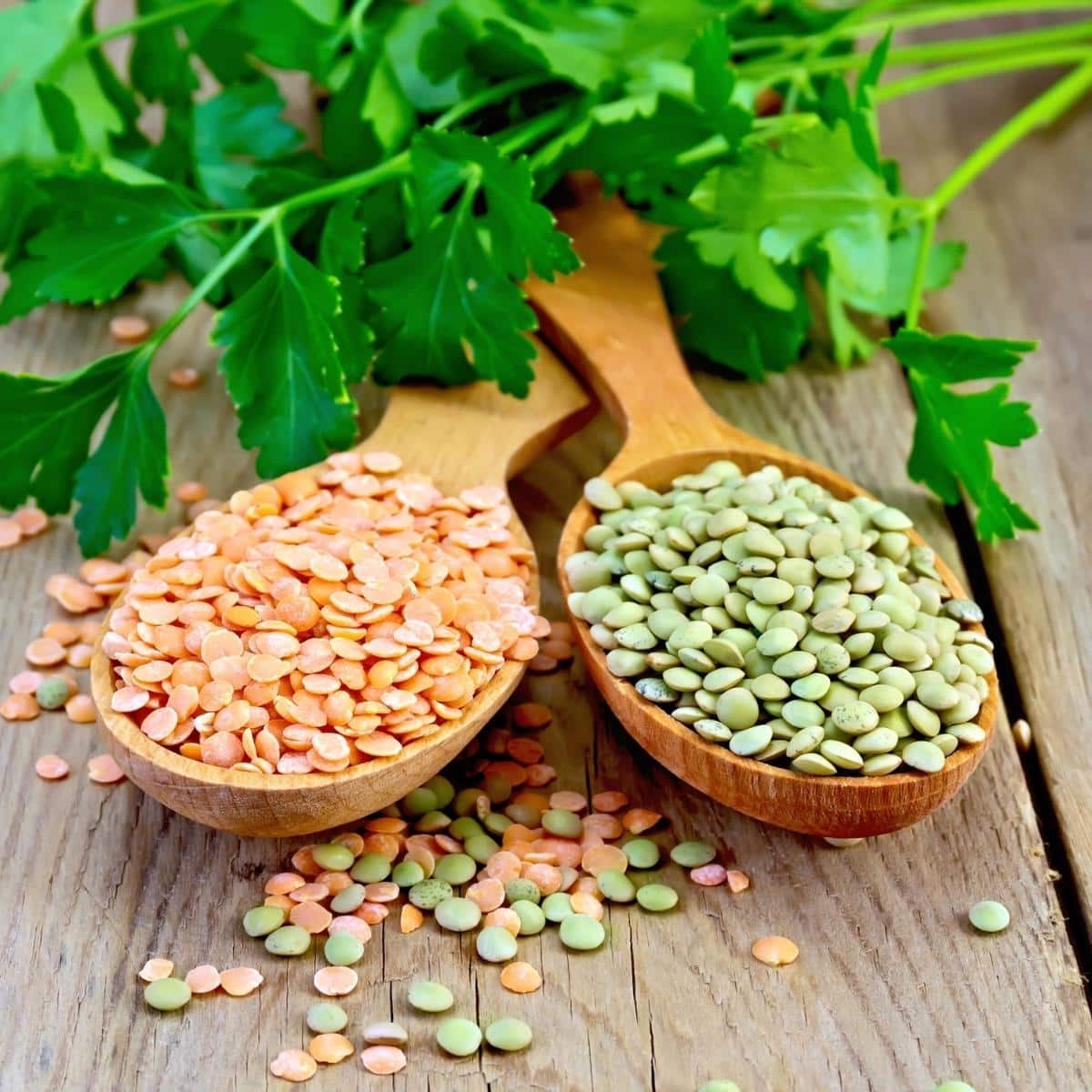
Jump to:
- What Are The Types Of Lentils?
- Are There Any Side Effects Associated With Eating Lentils For People With Kidney Disease?
- Benefits Of Lentils
- Potassium Content Of Lentils
- How To Cook Lentils Properly
- Naturally Occurring vs. Added or Inorganic Phosphorus in a Kidney-Friendly Diet
- Low-Phosphorus Varieties Of Lentils
- High-Potassium Varieties Of Lentils
- Other Nutrients Found In Lentils
- How To Incorporate Lentils Into A Kidney-Friendly Diet Plan
- The Role Of Fiber In A Kidney Diet Plan
- Choosing The Best Types Of Lentils For Your Needs
- Frequently Asked Questions
- Are Lentils High In Potassium?
What Are The Types Of Lentils?
We've all been there. You're in the grocery store trying to pick out which type of lentil you should buy for your next meal, but you feel overwhelmed by the sheer number of options. Don't forget to take this Comprehensive Healthy Renal Diet Grocery List Guide with you to the grocery store.
There are red lentils, green lentils, yellow lentils, black lentils and French lentils just to name a few! But how do you know which one is right for your dish?
To begin, we have Red Lentils. They have a mild flavor and cook quickly, making them great for soups, stews and curries. When cooked they become creamy and soft like mashed potatoes – perfect for purées or hummus. Red lentils are higher in potassium than other lentils.
Green Lentils are slightly more flavorful than red ones and hold their shape better when cooked, so they make an excellent salad ingredient as well as being delicious in casseroles or side dishes.
Yellow lentils are similar to red ones but smaller in size. These have a sweet taste that makes them ideal for Indian dal recipes or any other kind of soup-based dish where the flavors need to be balanced out nicely.
Black Lentils (or beluga lentils) on the other hand don't break down easily even after cooking for long periods of time - making them great candidates for hearty cold salads or warm side dishes.
Finally French Lentilles du Puy are earthy flavored legumes traditionally used in savory winter dishes such as cassoulet and shepherd's pie.
No matter what type of dish you plan on making, these versatile ingredients will certainly add lots of flavor without compromising nutrition value either way!
For More Recipes and Ideas --->> Get Your Free Meals and Recipes That Are Perfect for Pre-Dialysis Diets, Pre-Dialysis with Diabetes, or Dialysis Diets.
Are There Any Side Effects Associated With Eating Lentils For People With Kidney Disease?
Eating lentils can be a great way to get essential proteins, minerals and vitamins into the diet of those affected by kidney disease; however, there could also come some risks along with this seemingly healthy choice.
We will explore if there are any side effects associated with eating lentils for people with kidney disease. People diagnosed with chronic kidney diseases may face unique dietary restrictions that limit their food choices due to changes in absorption or reduced renal function.
Lentils contain high levels of phosphorus and potassium which could lead to an accumulation of toxins in the body if consumed in excess.
Consulting a healthcare professional is always recommended first regarding any nutritional decisions geared towards improving quality of life.
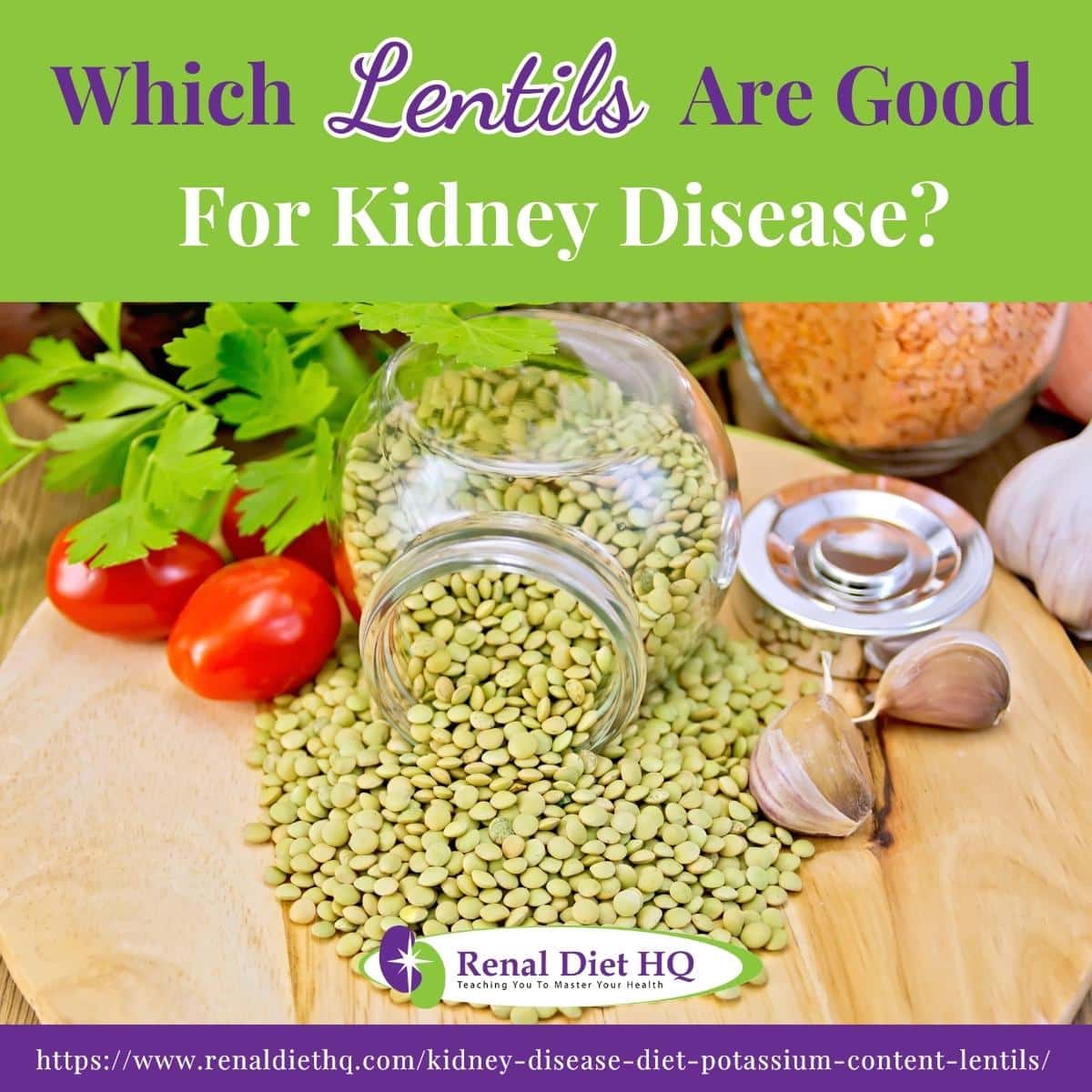
Benefits Of Lentils
Lentils can be a great source of nutrition for people with kidney disease. They contain high levels of vitamins, minerals and high quality proteins that are beneficial to overall health.
Lentils are especially rich in B-vitamins which help support the body's metabolism and energy production and they are a plant based food. Additionally, lentils provide an excellent source of fiber that helps regulate blood sugar levels and prevent constipation.
The high level of dietary fiber found in lentils can help reduce inflammation associated with kidney disease as well as lower cholesterol levels and improve digestive functioning.
However, the protein content in lentils is also high. One cup contains 18 grams of protein, so they should only be consumed in moderation in renal diets.
In terms of mineral content, lentils are packed with iron, magnesium, zinc, and folate – all essential nutrients for maintaining healthy kidneys and preventing further damage from occurring.
Furthermore, they’re low in sodium so you don't have to worry about overloading your system with salt when eating them. With these nutritional benefits, it’s easy to see why lentils should be part of any diet designed for someone suffering from kidney disease. Following a low sodium renal diet is a good idea when dealing with CKD.
Eating a variety of foods is key to good health regardless if one has a chronic illness or not; however, incorporating lentils into meals provides extra assurance that some specific needs will be met without compromising taste or quality--making them an invaluable asset on the road towards better kidney health!
Potassium Content Of Lentils
The kidneys normally help regulate potassium levels in the body, but when they are not functioning properly, potassium can build up in the blood, leading to a condition called hyperkalemia.
Hyperkalemia can cause serious health problems, including heart arrhythmias and muscle weakness. Lentils contain high levels of potassium and shouldn’t be consumed in large quantities by people with kidney disease.
Lentils come in several varieties that vary in their potassium profile . Let's take a closer look at the potassium content of lentils and how it can help people with kidney disease.
Low Potassium Lentils: Yellow lentils are the healthiest choice for renal patients. Cooked yellow lentils have an average of 731 milligrams of potassium per one single cup.
Are red lentils high in potassium? The red lentils and is the average of lentils potassium levels discussed for those on kidney friendly diets.
Sodium is 471 milligrams, and protein is 18 grams per one cup in this type of lentil, so it is important to note if you are on a specific protein diet to count this in as it has higher amounts of proteins.
Compared to other varieties of lentils, yellow lentils have the lowest amount of potassium while still retaining their fiber and protein content.
So, while they should not become a staple in your meals, the yellow lentils are the best renal-friendly option for healthy kidneys and kidney function with diet rich minerals out of these legumes.
The average potassium content in a single cup of red lentils is about 780 milligrams. The sodium is 480 milligrams, and the protein is 6 grams.
This is on the slightly higher end of the spectrum for sources of potassium content in lentils, but depending on how they are cooked, red lentils could still be a good option in small quantities for a renal diet.
Green lentils are by far the most potassium-rich lentils coming in at around 900 milligrams for just half a cup.
So while the green lentils may contain other healthy aspects like 31 grams of dietary fiber, they are just not a good choice for those with kidney disease due to the high dietary potassium.
With so many different types available, there's sure to be something suitable no matter what dietary restrictions you may have from managing kidney disease. From browns to blacks - each provides its own special contribution towards keeping us healthy while still being tasty enough to fill you with joy!
How To Cook Lentils Properly
Lentils can be cooked in a variety of ways, including boiling, pressure cooking, simmering and steaming. Depending on the type of lentil and desired texture, different methods may work better than others.
Knowing how to cook lentils properly can ensure that you are getting all their nutritional benefits.
Boiling is one of the simplest methods for cooking lentils. To do so, start by placing dry lentils into a pot with water or broth - the ratio should be 2 cups liquid per 1 cup of uncooked lentils.
Add any seasonings or vegetables as desired, then bring it to a boil over high heat before reducing it to low-medium heat and allowing it to simmer until they reach your desired tenderness - typically 15-20 minutes. Drain off any extra liquid when done and serve!
Pressure cooking is another great option for preparing lentils quickly while preserving their nutrients; however, care must be taken not to overcook them.
Start by adding rinsed/soaked (depending on which kind) lentils into a pressure cooker along with enough liquid (2:1), seasonings or vegetables as desired.
Seal the lid according to manufacturer’s instructions and set the timer for 3-4 minutes at high pressure depending on size/type of each individual batch. Once finished, allow natural release before opening up the cooker and serving!
No matter which method you choose for cooking your lentils, make sure you keep an eye on them throughout the entire process since improperly cooked ones could cause digestive issues if consumed raw or undercooked.
Another great tip to use when cooking lentils is leaching. Leaching is a process through which you soak the lentils before cooking them to get as much potassium out beforehand as possible. Leaching vegetables is quite common with people who are eating a renal diet.
This is especially helpful to those with kidney disease because it can help you eat foods that are usually deemed off-limits by reducing levels of potassium per cup. Leaching starts by placing the number of lentils to be cooked in a large pot of warm water.
The larger the pot, the more dispersed the potassium will be once it leaves the lentils, which will maximize the amount leached out.
Warm water is also essential because it helps facilitate the movement of potassium out as well. Leave them soaked for up to two hours, and then cook by whichever method you prefer. This will decrease the amounts of potassium intake, but still, be mindful of eating these in moderation.
Naturally Occurring vs. Added or Inorganic Phosphorus in a Kidney-Friendly Diet
When managing chronic kidney disease (CKD), phosphorus control is crucial, as high levels of this mineral can lead to complications like bone and cardiovascular issues. Phosphorus in our diet comes in two primary forms: naturally occurring phosphorus found in whole foods and added or inorganic phosphorus found in processed foods.
Naturally Occurring Phosphorus
Naturally occurring phosphorus is found in protein-rich foods such as dairy products, meats, lentils, beans, nuts, and whole grains. In its natural form, phosphorus is bound to organic compounds, which means that the body absorbs it less efficiently. For example, the phosphorus in plant-based foods like lentils is primarily bound to phytates, a type of indigestible fiber. This binding makes it less accessible to our digestive system, resulting in only about 40-60% of the phosphorus being absorbed. While this form of phosphorus is present in many nutritious foods, it is generally better tolerated by individuals with CKD when consumed in moderation.
Added/Inorganic Phosphorus
In contrast, added or inorganic phosphorus is found in many processed foods and beverages, where it is used as a preservative or to enhance flavor and texture. This type of phosphorus is often listed as "phosphates" on ingredient labels and includes additives such as sodium phosphate, calcium phosphate, and phosphoric acid. Inorganic phosphorus is not bound to organic molecules, making it highly absorbable—up to 90-100% of it can be absorbed by the body. This high absorption rate can quickly raise phosphorus levels in the blood, posing a significant risk to those with CKD.
Why the Difference Matters
For individuals with CKD, the difference between these two types of phosphorus is significant. Since the body absorbs added phosphorus much more efficiently, it can lead to dangerously high blood phosphorus levels if consumed in excess. This is why it's important to limit the intake of processed foods that contain these additives. On the other hand, naturally occurring phosphorus in whole foods is part of a more balanced and nutrient-rich diet, and with careful portion control, it can be included in a kidney-friendly diet.
When managing your phosphorus intake, focus on whole foods and minimize processed foods that contain inorganic phosphorus additives. This approach not only helps control phosphorus levels but also supports overall health by encouraging a diet rich in nutrients and low in harmful additives.
Low-Phosphorus Varieties Of Lentils
Seeking kidney-friendly lentils? Look no further! Low-phosphorus varieties of lentils are a great option for those with kidney disease. They provide the same nutrient benefits as other types, but without all the phosphorus.
Phosphorus content is often higher in some legumes which can put an extra strain on kidneys and make them work harder to process it, leading to problems like hyperphosphatemia.
Fortunately, low-phosphorus lentils have less than half the amount of phosphorus found in regular versions – making them much easier on impaired kidneys.
Apart from being beneficial for people with chronic kidney disease, low-phosphorus lentils also offer plenty of nutritional value. Rich in fiber, protein, and vitamins A & C - they’re a powerhouse food that helps combat malnutrition and improve overall health.
Many recipes call for only small amounts of these nutrient-rich lentils so you don’t need to worry about consuming too many at once. Additionally, the easy cooking time makes them ideal for busy lifestyles.
When should I limit phosphorus with CKD? Low-phosphorus varieties of lentils are a great choice when looking to reduce your phosphorus intake while still reaping the benefits of this versatile legume.
Whether you’re dealing with kidney issues or just trying to eat healthier – these delicious beans are sure to be part of your diet rotation soon!
High-Potassium Varieties Of Lentils
High-potassium varieties of lentils are great options for those managing kidney disease. Potassium is a mineral found in many foods, and while it's important to keep levels balanced when dealing with kidney disease, eating high-potassium foods can help support the body’s functioning. Here are the top five types of high-potassium lentils:
| Lentil Type | Serving Size (g) | Potassium Content (mg) |
| Red Lentils | 200 g | 719 mg |
| Split Peas | 200 g | 700 mg |
| Black Eyed Peas | 200 g | 693 mg |
| Mung Beans | 200 g | 680 mg |
| Adzuki Beans | 200 g | 674 mg |
These nutrient-rich legumes provide an array of health benefits that may help people with chronic illnesses such as kidney disease. Eating red lentils, which contain essential vitamins like B6 and folate, can improve metabolic functions. Protein-packed split peas can boost energy levels, while black eyed peas deliver dietary fiber to increase digestive regularity.
Meanwhile, mung beans have anti-inflammatory properties which could be beneficial for anyone battling inflammation due to their condition. Lastly adzuki beans aid in reducing cholesterol levels - something often necessary for individuals with certain types of kidney diseases.
As you can see from this table, there is no shortage of delicious, nutritious high potassium lentil varieties available!
As long as these are consumed within recommended amounts by your healthcare provider or dietitian, they may become part of a well-balanced diet designed specifically for those managing kidney disease.
With all these amazing health benefits available in one single food group, adding some variety to meals has never been so easy!
Other Nutrients Found In Lentils
Lentils are a nutritional powerhouse, full of essential nutrients that support our bodies in many ways. They offer more than just protein and fiber; they contain an abundance of vitamins, minerals, antioxidants, and other beneficial compounds too. Iron, zinc, magnesium, vitamin-A, and vitamin-C are among the most widely known of these nutrients found in lentils.
Iron is integral for healthy red blood cell production and DNA synthesis while also providing energy to cells throughout the body. Zinc helps with immunity as well as healing wounds—an especially helpful nutrient for those suffering from kidney disease since their immune systems can be weakened due to medications or treatments.
Magnesium plays a role in muscle contraction, nerve function, blood pressure regulation, bone strength maintenance and much more. Vitamin A promotes eye health while vitamin C enhances iron absorption which is important during periods of illness when dietary intake may decrease significantly.
These micronutrients provided by Lentils help build strong bones and muscles along with supporting overall bodily functions like maintaining healthy skin and hair—all promoting good quality of life for those living with kidney disease.
Eating moderate amounts of lentils can provide these necessary nutrients without having to worry about excess sodium or phosphorus levels present in some foods making them ideal for individuals needing renal diets.
By consuming moderate amounts of lentils you can reap all their amazing benefits with none of the risks!
How To Incorporate Lentils Into A Kidney-Friendly Diet Plan
As we have seen, lentils can be an excellent source of essential nutrients for those with kidney disease.
The key to incorporating lentils into a kidney-friendly diet plan is finding the right combination of low-phosphorus and high-potassium lentils. Here are three tips for doing just that:
Choose low-phosphorus varieties
Lentil recipes should include lower phosphorus legumes such as red split lentils, green split peas or yellow split peas. These types of lentils are generally easier to digest than other varieties, which can be beneficial for those with weakened kidneys.
Consider using canned lentils
Canned lentils are often lower in potassium and phosphorus than dried lentils, as some of these minerals are removed during the canning process.
If you're concerned about your intake of these minerals, consider using canned lentils instead of dried.
Experiment with different flavors
Incorporating lentils doesn't mean you're stuck eating bland food! There are so many delicious ways to incorporate these versatile ingredients into your meals - from soups and stews to salads and casseroles. You can even make burgers or veggie balls out of cooked lentils!
These tips will help ensure you get the most health benefits out of every meal while sticking to a kidney-friendly diet plan. With some creativity in the kitchen, it's possible to make tasty dishes that support overall wellbeing too!

The Role Of Fiber In A Kidney Diet Plan
Fiber plays an important role in a healthy kidney diet plan. In addition to providing essential vitamins, minerals, proteins, and carbohydrates, lentils are also packed full of beneficial fibers like insoluble and soluble fibers.
Incorporating fiber-rich lentils into your diet can help reduce bad cholesterol levels while increasing good cholesterol levels. Fiber is also known to decrease inflammation within the body which can be very beneficial for those who suffer from chronic kidney diseases.
Additionally, fiber also helps slow down digestion so you feel fuller longer; this can lead to better weight management and improved overall health outcomes.
Kidney friendly legumes such as black beans, navy beans and chickpeas are great sources of fiber. There are delicious recipes like this black bean and rice burrito that is well worth trying.
Eating these types of legumes regularly will not only provide necessary nutrients but may improve your overall wellbeing too!
Choosing The Best Types Of Lentils For Your Needs
Are you wondering which lentils are best for a kidney-friendly diet? With so many different types of lentils available, it can be hard to know what makes one type better than another.
Luckily, there are some guidelines that can help make the lentil selection process easier and ensure your diet is beneficial for overall kidney health.
When choosing the right kind of lentils for your needs, the most important factor to consider is phosphorus content. Phosphorus is an essential mineral found in food; however, it’s crucial to keep phosphorus levels low when living with kidney disease.
Certain types of lentils have higher amounts of phosphorus compared to others, making them unsuitable for a kidney-friendly diet plan. Varieties like red or yellow split peas and green or brown French lentils contain less phosphorus and should be selected instead.
No matter what type of legume you choose, they all offer numerous health benefits like fiber and iron - two key components missing from many other foods on a renal-restricted diet. So go ahead and experiment with various kinds of legumes until you find ones that work well with your particular dietary restrictions!
Frequently Asked Questions
Kidney disease is a serious health issue that requires lifestyle changes and dietary restrictions. Fortunately, there are many nutrient-rich foods, such as lentils, which can help those suffering from renal diseases. Learning how to manage chronic kidney disease will come with time!
In this article, we'll explore the types of kidney diseases that may benefit from eating lentils and how these legumes can support general health maintenance for individuals with chronic conditions.
When it comes to managing kidney disease, diet plays an important role in improving symptoms. Lentils are packed with essential vitamins and minerals like folate, iron, fiber, phosphorus, potassium and B6.
Eating them regularly helps maintain healthy blood pressure levels while providing necessary energy sources for people dealing with chronic illnesses. They also contain protein but in lower amounts than other legume varieties.
This makes them ideal for those who need to limit their animal-based protein intake due to certain medical complications associated with kidney failure or dialysis treatments.
In addition to their nutritional value, lentils have been found to reduce inflammation throughout the body when eaten on a regular basis. This is especially beneficial for people living with renal diseases because inflammation often exacerbates symptoms associated with organ damage caused by the condition.
Furthermore, including lentil dishes into weekly meal plans provides variety within restrictive diets; something which is key to avoiding boredom and maintaining overall nutrition goals set by healthcare professionals involved in treatment plans related to kidney ailments.
Consuming lentils as part of a balanced diet can be beneficial for those dealing with specific types of kidney conditions such as Polycystic Kidney Disease (PKD).
PKD sufferers have increased risk factors due to poor nutrition and diet-related issues, so incorporating lentils as part of their daily meal plan can help avoid further damage caused by malnutrition while getting the necessary nutrients needed for overall good health.
Additionally, people who have had recent kidney treatments like dialysis may need more protein than other patients since they tend to lose large amounts during treatment sessions.
The high amount of vegan-friendly protein found in lentils helps make up for these losses while providing extra energy needed throughout recovery periods.
No matter what stage of kidney disease someone is experiencing - whether they’re looking forward to getting back control over their life through diet modifications or dealing with long-term implications of chronic illness–nadding more lentils into meals can provide relief without sacrificing taste or enjoyment of food experiences.
Therefore, if you know someone coping with any type of renal disorder consider suggesting incorporating this nutrient-rich food into their daily regimen as part of a comprehensive approach towards bettering health outcomes over time!
When it comes to managing kidney disease, a healthy diet is key. One of the most important nutrients in a kidney-friendly diet is fiber.
While lentils are a great source of fiber, there are several other food sources that can help people with kidney disease regulate their levels.
To ensure proper health and nutrition for those with kidney disease, it's crucial to understand what kind of fiber-rich foods are suitable for their specific dietary needs.
Some high-fiber foods are also high in potassium and phosphorus, which can be problematic for people with CKD. Here are some fiber-rich foods that are generally safe for people with kidney disease:
1. Apples: Are apples good for your kidneys? Apples are high in fiber and low in potassium, making them a good choice for people with kidney disease. Be sure to eat them with the skin on, as this is where most of the fiber is found.
2. Berries: Most berries, including strawberries, raspberries, and blueberries, are low in potassium and high in fiber. They're a great snack or addition to smoothies and yogurt.
3. Cauliflower: Cauliflower is a low-potassium vegetable that's high in fiber. It can be roasted, steamed, or mashed like potatoes.
For those who need more ideas on how to create tasty yet nutritious dishes while following a renal diet plan, there are many resources available online or through your local doctor’s office.
A registered dietitian can offer personalized advice on meal planning based on individual medical history and preferences. You can also view this 7 day meal plan for kidney disease to get a better idea of what you need to follow.
Furthermore, support groups may be an option for individuals wanting to learn more about preparing delicious meals that meet their unique nutritional needs–all while staying within the parameters set forth by their kidney-friendly diet!
It is important for people with kidney disease to be aware of the amount of fiber they should consume.
Dietary fiber plays an essential role in managing and preventing complications from kidney disease, as it can help maintain blood sugar levels and reduce cholesterol. When considering what foods to eat, those with kidney disease should focus on getting enough dietary fiber in their diet.
When looking at how much dietary fiber a person with kidney disease needs, it depends on many factors such as age, sex, health condition, and activity level.
Generally speaking, renal patients require the same amount of fiber per day as healthy adults, which is 25-38 grams of total dietary fiber per day depending on calorie intake. For those suffering from chronic kidney disease.
To meet this requirement there are several food sources that provide adequate amounts of dietary fiber including legumes like lentils, oats (oatmeal and kidney disease), fruits and vegetables such as apples and broccoli.
Nuts and seeds like almonds or chia seeds, whole grains like quinoa or brown rice, dark leafy greens such as spinach or kale and high-fiber cereals containing wheat bran or psyllium husks.
Eating these foods regularly will ensure proper consumption of the recommended amount of dietary fiber for those living with CKD.
Including these nutrient-dense foods into meals can be done easily by adding them to smoothies or salads for lunchtime snacks, replacing white breads with whole grain options for sandwiches or using beans instead of beef in chili recipes for dinner - all while still providing sufficient amounts of protein needed for healthy functioning kidneys!
Are Lentils High In Potassium?
If you love legumes and want to try having a healthy option that provides health benefits like lentils in your diet, it is best to stick to yellow lentil food sources in moderation and soak them before cooking to remove as much potassium as you can. Then you can enjoy your lentils without worrying about your health.
Lentils are a great source of nutrition for people with kidney disease. The high fiber content helps promote healthy digestion, while the array of vitamins and minerals provide essential nutrients for a healthy body. Lentils are also low in fat and cholesterol, making them a heart-healthy choice for people with kidney disease.
For these reasons, lentils are an excellent choice for those with kidney disease and should be included as part of a balanced, healthy diet.





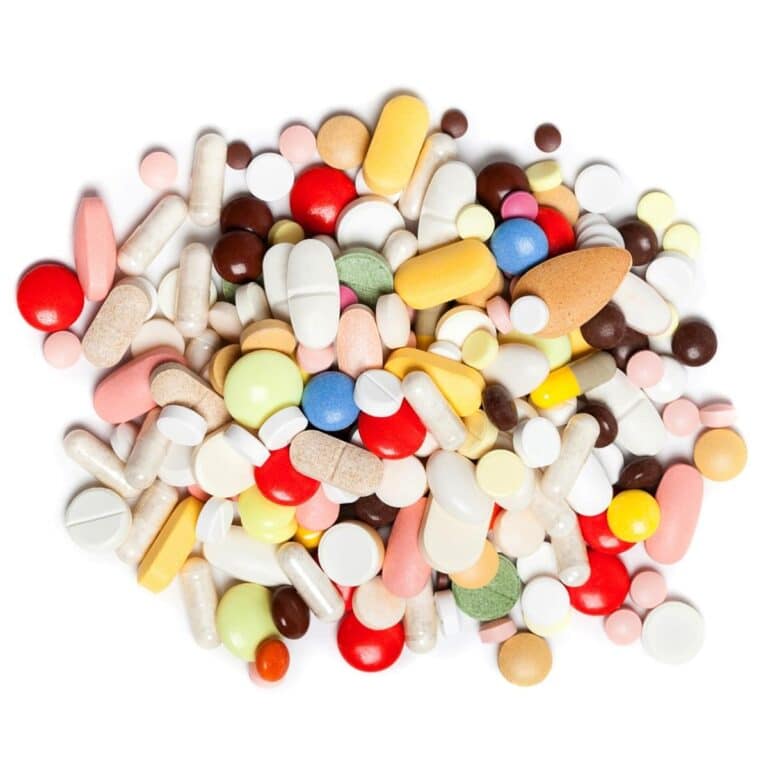


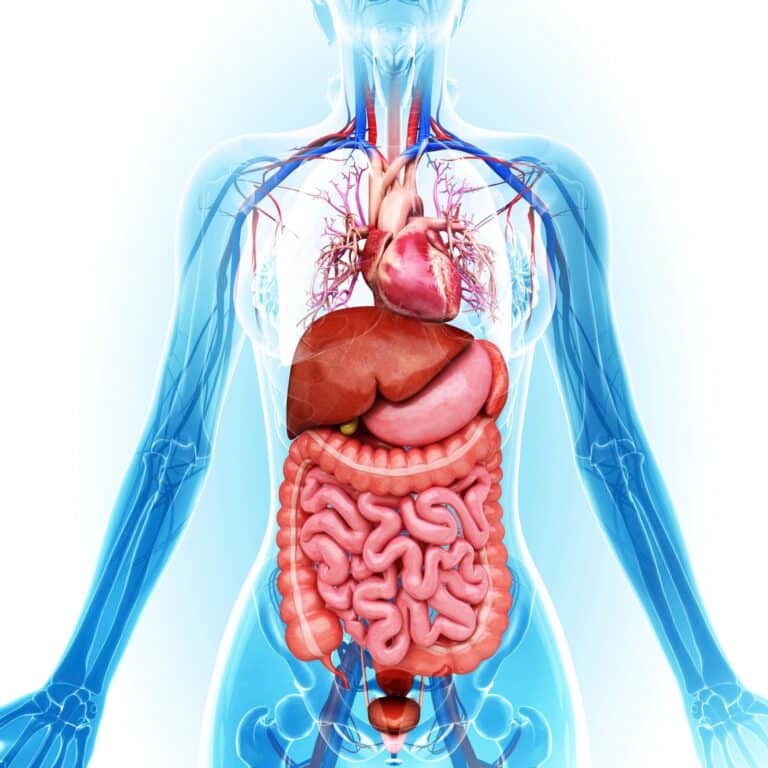
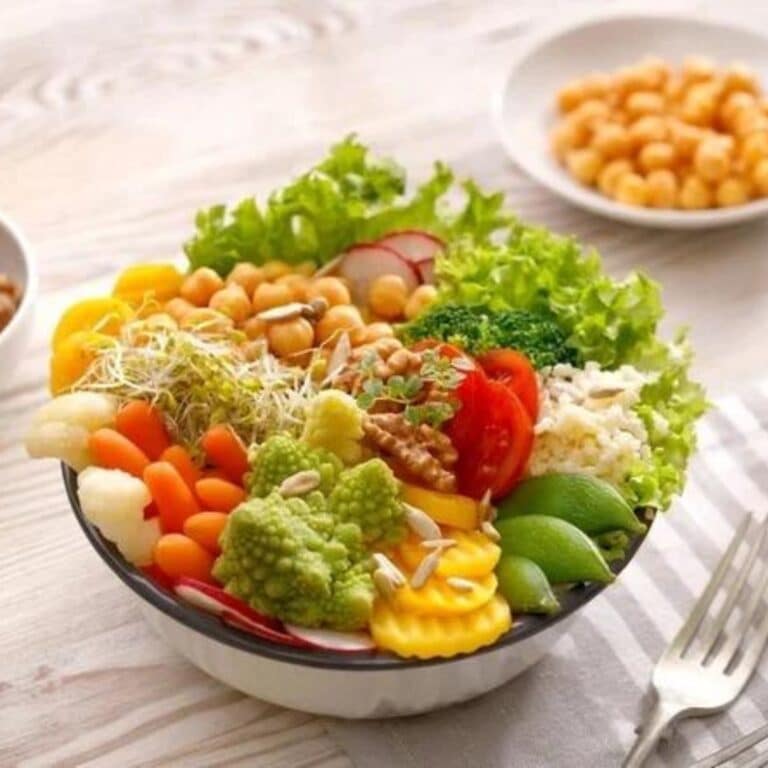
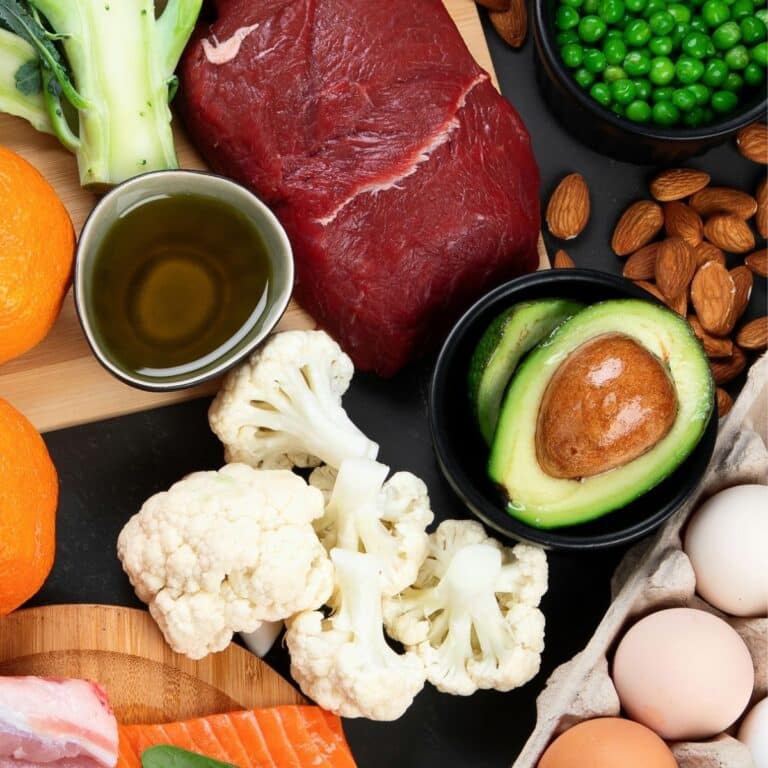



Very helpful. Would love to get a print version of this information. Thank you!